Age in Place or Universal Design Kitchens
Sherri Stein
13 years ago
Featured Answer
Comments (18)
pinch_me
13 years agolast modified: 9 years agoRelated Discussions
Floor Plan - tips on aging in place?
Comments (10)The only entrance to the master suite is allll the way at the back of a rather large house. I'd consider a second entrance nearer the closet /bath end. I suspect this would be convenient quite often. Since you're talking about aging in place, a toilet in a closet is impractical. Tuck it behind a door or behind the shower, but allow yourself the space you'll need to navigate the area. I would open up the pantry to be a part of the mudroom. This means that when you enter the house with groceries, you're set to put things away. I don't see laundry anywhere? You have a large, space-hogging set of stairs . . . but they're tucked away. These lovely and expensive stairs make sense, if you're showcasing them in your entry or on the edge of your family room, but if you're tucking the staircase away to the edge, I'd go with the less expensive, less space-hogging straight stairs. Also, if you are going with these stairs, at least harnass the space underneath them. You have probably 4 or 5x8' of half-height space, which could be storage open towards the garage . . . or a built-in desk or shelves open towards the office. I would not block off this space! If you stick with this staircase, definitely add a window on the landing. You don't want people navigating the stairway in the dark. Both of your showers look narrow-skinny. Your kitchen aisle looks rather narrow-skinny too. In the secondary bedroom, if you move the closet to the bathroom wall, you'll insulate that room against bathroom sounds . . . and I think you'll get a larger closet. You'll also have a bit of an "alcove" as you enter the room, which is nice. Reaching this secondary bedroom is a long walk. I'd consider a door near the kitchen. If you (or another owner) ever needed to use the office as a bedroom, this would be a better option. I'm not a fan of over-sized garages, but I see a problem with this one: The opening closest to the house, I'm not sure you can pull into it. I think the front stairs might prevent you from making that turn. Will your middle garage door allow a large vehicle (i.e., handicapped van) to enter?...See MoreWeek 121 - Aging in place kitchen planning - did you or didn't you?
Comments (22)3z3z3 - a separate post on kitchens would get you more help. if you want to set things up more for handicap/injury use be sure to post that. any of us can get an injury that will cause mobility problems at any time. about 14 yrs ago now (wow... that long ago?) I broke my knee cap. that was painful... and painful to move around. and I'll tell you it was painful to get down/up on/from the toilet. horrible pain. we don't normally realize how much weight / use we need from our hips, thighs, legs to do these normally simple normal life things. when I moved to my new place I did what I could to make things easier for me now and in the future. it started with it having a tubless shower. no more climbing over a tub edge! that's made a world of difference for me! I put in levers on doors and changed a floor (nice one too) that had a too high lip on it from the hallway and DR area. and have plans to change out the bathroom / kit faucets to 1 lever handle. I had some vinyl plank flooring put in cause I do fall frequently (more than normal people) and wanted a softer landing. also, if there's a leak, it'll be easier for me to pull up so subfloor doesn't stay soaked. no cabinet handles with sharp ends and at least a 1.25" projection - also at least 5" long. plenty of room for getting my fingers in/around the handle. the no sharp ends is in case I do fall, nothing sharp to hurt me. I also made sure the place was big enough that I could get around with a walker or wc. I have plans to have 1 lower cabinet changed to drawers in the kitchen (it doesn't have many cabs anyway). I do have a good sized pantry off the side of the kitchen where I could keep more things if necessary. and a ramp is in the back of my mind. unless something rushes it, it'll probably be 2 yrs or so down the road. I have 4 steps in/out any ext doors. I recently bought an AF to use instead of the oven (mostly). some of that is that I'm single and what I use the oven for is usually very little. I also bought a 1 pot cooker (3.5 qt) so I could hopefully use less 'pots' for cooking and not use the stove. this pot will cook something for the time set and then go to 'warm'. if I doze off or forget about it, it won't burn anything up like the stove burner would. I'm also considering an induction hot plate for when I do want/need an actual burner. I think it's less likely to cause a fire than my electric coil stove top burner. I can't remember when I ever had need of more than 1 burner. I lived in the old place 14 yrs with a 1 burner hot plate and survived nicely. Then i'll probably just detach the coils and cover the top - maybe with a piece of SS....See MoreArticles: What To Look For If You Plan To Age In Place
Comments (27)our garage is BIG ENOUGH to maneuver around in a walker with the car door open, etc. That's one of the reasons to go with the larger single door - because if you downside to one car, you can drive it in the middle. Good points. My grandmother had a two-car garage with one door, and it was so easy for me to back in (so the passenger side'd be near the house door), open the door for her, and bring her walker around to her. Our plan for ourselves is that we'll go into retirement with the two cars we already have ... and we'll judge whether we need to continue with two. At some point we'll drop one car -- likely when he experiences some medical problems -- and then we can park my car in the dead center, if needed. Of course, all this is predicated on there being someone to care for someone with such limited mobility! Will it be a family member who is willing to do so and enough younger to be ABLE? A spouse of the same age is often not able. Having round the clock caregivers so one can stay at home is a true luxury. A retirement home in assisted living - even skilled nursing is less expensive, even if harder to accept. I'm 100% sure that a retirement home is more expensive than aging-in-place. Of course, any of us could reach the point that a nursing home is necessary, but why not postpone that date as long as possible. You raise a fair point about having a caregiver. I have several thoughts on this issue: - My RN daughter worked "home health" at times during college, and my grandmother had "home health" at times. A whole lot of people don't need (or don't yet need) round-the-clock care, and help a few hours a week can allow them to stay in their own homes. Every time the home health aid comes, the visit begins with a check of vitals, and it's good to have someone check in on you frequently. Some insurance covers this, and if you pay out of pocket, it's still less expensive than a retirement home. A home health care provider comes in for a couple hours several times a week. The #1 thing my daughter did was help people with personal hygiene. She also did light housekeeping (i.e., change the sheets and throw the dirty ones into the washer), did prep work for meals so the elderly person had an easy meal to cook, and sometimes even drove them on errands. She worked frequently for an elderly brother-sister who lived together, and they had the system figured out: The sister's home health worker came several times a week, always in the morning. She'd help the sister with her bath and help prep a few meals. Then my daughter came in the evening for the brother. She'd help the brother with whatever he needed, then prep a few more meals. Smart people. - My husband and I are building a master bedroom downstairs for ourselves ... and another upstairs. Our plan is that this second master would allow one of our children (or a future grandchild) to live upstairs, allowing for a bit of separation /privacy. If this doesn't work out for one of our children, it'd be possible to find a college student or a lady trying to get back on her feet after a divorce who'd like a free place to live in exchange for "being there" in the evenings and helping with cleaning and driving for an elderly person. Or such a place could be a good option for a paid caregiver. - My own grandmother was able to cook her own breakfast, and Meals on Wheels brought her lunch 5 days a week ... and since she ate so little, that meal was usually enough for dinner too. She was fortunate enough to have 2 children and 4 grandchildren in the local area, and she went out to lunch or dinner (then shopping or whatever else she needed) with someone about three times a week. - I mentioned Meals on Wheels. Many communities have nice programs for the elderly that include transportation and more. And now we have Ubers, giving us more access to transportation than previous generations. - In our case, my husband's the fortunate one! I'm younger and in better health, so realistically I'll be his caregiver ... but I don't think I'll be in terrible shape later on. but my mom's age-related spinal compressions and scoliosis make her already low vanity height ideal. Yeah, I started out short, so the ideas about higher vanities don't appeal to me at all! You must allow space around the toilet for bars, the possibility of installing arms beside the toilet, room for a walker to maneuver, and possibly our my a caregiver to assist. I really think this is one of the things that people most often do wrong in custom houses: My grandmother had great trouble using public bathroom stalls -- even the larger handicapped stalls -- yet so many people shove their toilets into closets. My grandmother opted to wear Depends and skip drinks when she went out so she could avoid those toilets. Yet she had no trouble using her home toilet, which had space around it as you describe /grab bars. Be sure hallways will allow a gurney to make corners if necessary. I say include a door from your bedroom straight to the outside. The ambulance guys can come through your back yard and take you straight out, no corners necessary. This kills two birds with one stone: My daughter mentioned that every elderly person for whom she provided "home health" enjoyed a place where he or she could sit and look outside. My daughter worked with one woman who lived in horrible housing, and lacking a better spot, the woman sat in the front doorway and looked outside ... blocking everyone's exit. I plan to hire on a maid to come by once every other week That's a great plan, and you can add on more time if you need it in the future. so we can install grab bars in all the bathrooms and showers when needed. Whether it's in 1 year or 60, they'll be taking me out of this house feet first Yeah, my plan is to use ALL grab bars, no towel bars. They make attractive grab bars that don't look industrial. The only negative is that they cost more, but I'd rather go ahead and do it up front rather than need them and have to scurry....See MoreQuestions about Aging in Place?
Comments (29)Aging in place" is a general catch-all phrase that is not realistic as you won't know your actual needs as you age. You think you can plan but realistic those things that you do may not be enough or overkill in the long run. I've been going through this with both my elderly parents and my partners who are in their mid 80's. Both sets still live in their homes but both have very different needs for aging in place. To have outfitted their homes for "aging in place" earlier in their lives would not have necessarily met their needs now or would have been overkill. What we've done to help them age in their home has been done as they needed it. Grab bars for my parents, not my partners. Rug removal for my mom's walker, rugs still are down in the other parents home. Hand rails added at entrance at one parents home. I don't see these as "aging in place" but to address their current actual needs. My partners parents live in a 3 level home but at 87 yrs old they can still manage the stairs. They built this house in their mid 70's and when we discussed aging in place during the build, they told us that if they got to the point of not being able to use their house, they would move. They were more concerned about building the home they wanted and not concerned of what "may" happen in the future. A few years back I was going to build a home with "aging in place" in mind. To achieve this, this included, bathrooms basically doubling in size and wider hallways to accommodate a wheelchair, if necessary, and zero steps in the garage to the house. Realistically if you want a "AIP" home, isn't this really a home that addresses the same issues as a home for a person with disabilities, especially with one to accommodate a wheelchair, so are we just trying to reinvent the wheel or just adding a fancy name to it? My take away from my experiences is that if you want a home for "aging in place" have a single story house and deal with the rest when the time comes. As you may find later on that you what you thought your needs and wants would be for when you got older are no longer the same. You may find yourself wanting a different type of life style and/ or house situation or even a different city or state. Active Senior Retirement Community or condo, anyone?...See MoreSherri Stein
13 years agolast modified: 9 years agoblfenton
13 years agolast modified: 9 years agoformerlyflorantha
13 years agolast modified: 9 years agowritersblock (9b/10a)
13 years agolast modified: 9 years agolyvia
13 years agolast modified: 9 years agodianalo
13 years agolast modified: 9 years agoontheroad
13 years agolast modified: 9 years agominiscule
13 years agolast modified: 9 years agoironcook
13 years agolast modified: 9 years agoSherri Stein
13 years agolast modified: 9 years agodianalo
13 years agolast modified: 9 years agoironcook
13 years agolast modified: 9 years agoformerlyflorantha
13 years agolast modified: 9 years agolaxsupermom
13 years agolast modified: 9 years agoironcook
13 years agolast modified: 9 years agoFori
13 years agolast modified: 9 years ago
Related Stories

UNIVERSAL DESIGNAging-in-Place Resolutions for the New Year
How to make your home help you age gracefully right where you are
Full Story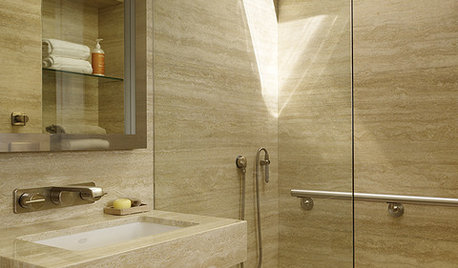
UNIVERSAL DESIGN12 Must-Haves for Aging in Place
Design a home that will continue to be accessible, safe and stylish as the years go by
Full Story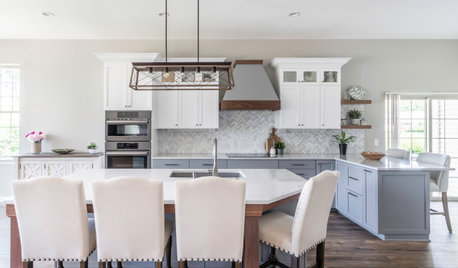
KITCHEN DESIGN10 Ways to Design a Kitchen for Aging in Place
Design choices that prevent stooping, reaching and falling help keep the space safe and accessible as you get older
Full Story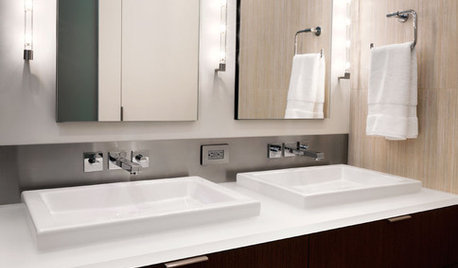
BATHROOM DESIGNUniversal Bath Design: Light Your Bathroom for All Ages and Abilities
Learn about uplighting, downlighting, visual cueing and avoiding glare for a bathroom that's safe and works for all
Full Story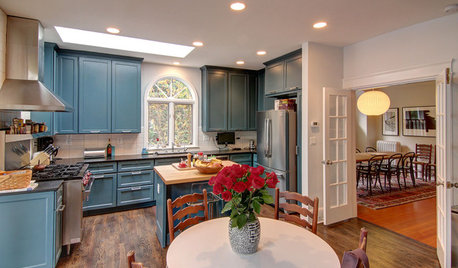
KITCHEN DESIGNOptimal Space Planning for Universal Design in the Kitchen
Let everyone in on the cooking act with an accessible kitchen layout and features that fit all ages and abilities
Full Story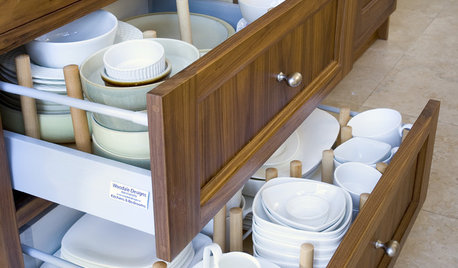
UNIVERSAL DESIGNKitchen Cabinet Fittings With Universal Design in Mind
These ingenious cabinet accessories have a lot on their plate, making accessing dishes, food items and cooking tools easier for all
Full Story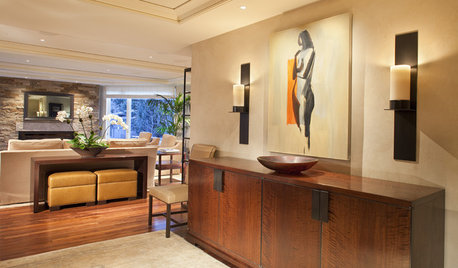
UNIVERSAL DESIGNUniversal Lighting Design Strategies for 4 Key Home Areas
Brighten the way for eyes of any age with ambient and task lighting that supports safety and imparts beauty
Full Story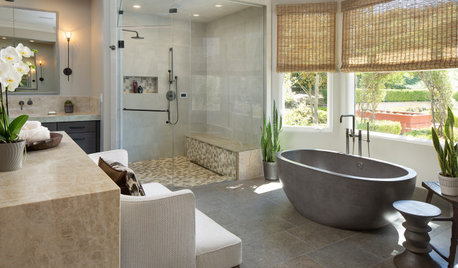
UNIVERSAL DESIGN11 Ways to Age-Proof Your Bathroom
Learn how to create a safe and accessible bathroom without sacrificing style
Full Story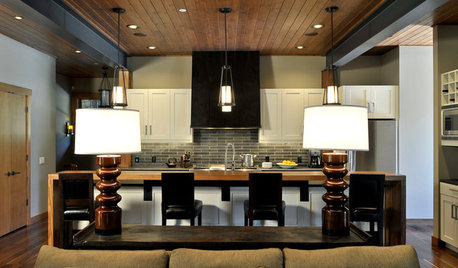
VACATION HOMESRoom of the Day: A Modern Lodge Embraces Universal Design
Homeowners design their Washington family vacation home to be accessible for their daughter with special needs and a mother in a wheelchair
Full Story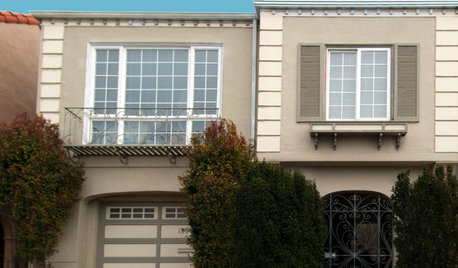
HOUZZ TOURSHouzz Tour: Universal Design in San Francisco Home
Skylights, grab bars, expanded doorways and more increase safety and accessibility in this Northern California home
Full StorySponsored
Your Custom Bath Designers & Remodelers in Columbus I 10X Best Houzz
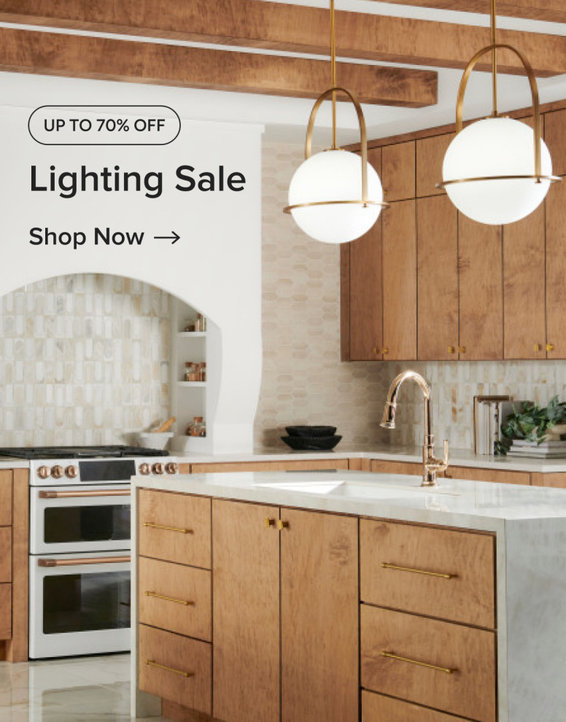




blfenton